
Taken For Granted (S Furler) 2000 and Drink To Get Drunk (S Furler) 2001 – Sia, Somersault (S Furler) – Zero 7 2004, and Breathe Me (S Furler) – Sia 2004
Sia (Sia Kate Isobelle Furler) was born in Adelaide on December 18, 1975, her father Phil Colsan. was a musician and her mother Loene Furler was an arts lecturer, family friends included Colin Hay (Men At Work) and members of INXS, so young Sia was exposed to music from an early age. She attended Adelaide High School and her formative musical influences included Sting, Stevie Wonder, and Aretha Franklin, whose singing styles she often impersonated as a child. Below- L-R Young Sia, Phil Colsan, Sia with Loene Furler.
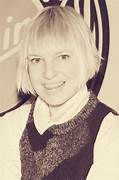
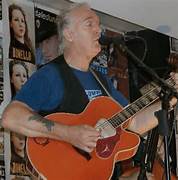

Sia launched her music career in the mid-90’s as a vocalist with Crisp, a local Adelaide acid jazz band, and contributed vocally to two of its EPs, Word and Deal (’96) and Delirium (’97), but Crisp disbanded in 1997 and in December that year the she released her first solo studio album, Only See under her full name, all thirteen tracks were self-compositions but failed to dent the local market. In 1997 her boyfriend, 24-year-old aspiring comedian and waiter Dan Pontifex, was killed in a hit-run accident just before the two were due to depart for the UK together, the couple had split but then reconciled, and were looking forward to travelling together. Sia recalled this some years later in a Rolling Stone interview in 2018 “”It was my first big loss, you know? So I drank a lot and did a lot of drugs with all of his grieving friends. I got seriously addicted to Vicodin and Oxycodone, I was always a drinker but didn’t know I was an alcoholic, so I just got sicker and sicker.” Below Sia x2, centre Dan Pontifex and Sia.
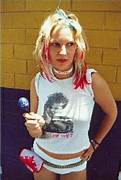
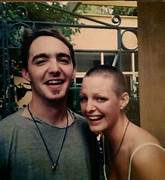

Devastated by Pontifex’s death, Sia finally relocated to London and became associated with British funk and acid jazz band Jamiroquai as a background vocalist. She also worked with English musical duo Zero 7 (Henry Binns and Sam Hardaker), and eventually, became an “unofficial” lead singer of the downtempo group that saw her touring with them, as well as contributing as vocalist on their first three studio albums. Below- L-R Album Artwork x2, Centre – Zero 7 – Sam Hardaker, Jose Gonzales, Sia, Henry Binns.
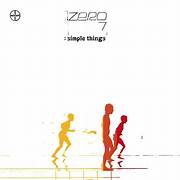

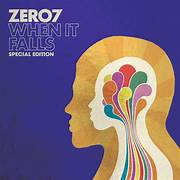
Her vocal contributions included the tracks Destiny and Distractions from the first album Simple Things (2001); tracks Somersault and Speed Dial No.2 from the second album When It Falls (2004); and five tracks from the third album The Garden (2006). Her interpretation of the melancholic Somersault was a whimsical tour de force of orchestral strings, basslines, and keyboards merging with the curious vocal inflexions of Sia, her rendition of this song with Tina Dico was a memorable performance at 2004’s Glastonbury Festival.



Healing Is Difficult, was released in the UK years before Sia’s Six Feet Under-assisted US breakthrough, when the song was played over the final episode that show in 2015 and created quite a buzz, so it was also too early to capitalize on the burgeoning critical praise for her Zero 7 debut for which she provided vocals,. Healing Is Difficult was fated to be a severely under-appreciated album, in the pre-global super-stardom phase of Sia’s career. The chiming trip-hop and clever sampling of Prokofiev’s Romeo and Juliet in Taken For Granted, underscored the brutal chauvinism of her lover “Now I’m sitting by the phone again/Waiting for your call/You’d said you’d phone at two/And it’s a quarter past four/Now I’m standing out the front again/It’s late at night/And I’m truly sick to death of sleazy men/ Undressing me with their eyes”. It would not be released in Australia until 2002 when it stalled at #61.
The desperate self-loathing of Drink To Get Drunk, a subtle, jazz-infused, saxophone-led track delved into the complexities of dealing with emotional pain and finding solace in unhealthy coping mechanisms. Through the juxtaposition of upbeat melodies and raw lyrics, Sia invited her audience to explore the idea of using alcohol as an escape “To make noise I use my breath/To unlock doors I use a key/ When I’m looking for something I use my eyes/ I use booze to unlock me” Below- Sia, Record Artwork, Alcohol Image.
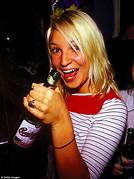
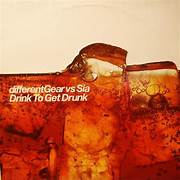
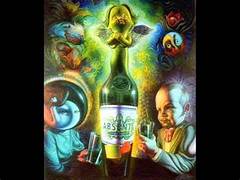
The song was a mix of sadness, desperation, and exhaustion; and while the melodies seemed upbeat, the underlying lyrics exposed the dark emotions that lie beneath the surface, and the juxtaposition of these contrasting elements created a powerful and emotional experience for her listeners, It wasn’t released in Aust. until 2001, where it peaked at #81.
Other tracks of note on Healing Is Difficult included the ambient fusion of haunting cellos, fluttering flutes, and slap basslines on the lilting dub-reggae of Fear, the acoustic nu-soul of Insidiously, and the string-soaked Blow It All Away, which offered early glimpses of the eclectic streak that would soon pervade Sia’s atmospheric brand of slurry, smoky, sensuous soul.
Written while grieving the death of Dan Pontifex, the tracks on Healing Is Difficult often allude to her personal tragedy, “My first love is already dead“, but despite the difficult subject matter, the album was achingly honest, while laying the foundations for her more celebrated future material, as she successfully pursued the retro jazz-soul sound half a decade before it was popularized, and unsurprisingly became the genre favored by Amy Winehouse. Below- Album/Record Artwork x 2, Anime Character.
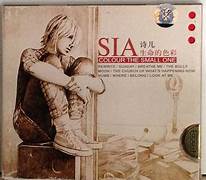
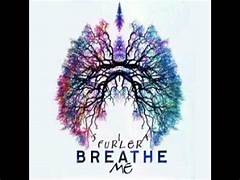

Not satisfied with the promotion of Healing Is Difficult, she sacked her manager and left Sony Music and signed with the Go! Beat label, and in 2004 released her third album Color The Small One, whose lead single Breathe Me, was used on the climactic series five finale of Six Feet Under, and exposed Sia to a much broader US market, where she would ultimately find her niche and emerge as an era-defining artist. Below- The Many Faces of Sia.



Critics found Breathe Me alternatively haunting, delicate, and moving, while others were less impressed with Sia’s lazy tempos, hazy vocals, imprecise diction, and a tendency to overdub her vocals till they became an indistinct blur. It would be fair to say that Sia’s murmured croon amidst a sea of shuffling beats and soft atmospherics, would become an acquired taste. Musically Sia used a constant piano motif throughout the song, with other instruments – bass guitar, percussion/drums, strings, marimba, electric guitars- providing some dynamic range- but it was Martin Slattery’s piano that was the tensile thread that held this emotionally piercing ballad together. Lyrically Breathe Me was suffused with vulnerability, “Be my friend/Hold me, wrap me up/Unfold me/I am small and needy/Warm me up/And breathe me…”. Sia wanted to be understood, known, befriended, feeling safe, she was not asking to be loved, and used non-rhyming lyrics to impart an intimate, conversational, almost confessional quality to the song, “Help, I have done it again/I have been here many times before/Hurt myself again today/And the worst part is there’s no one else to blame…” the promo video was unique, and used over 2,500 polaroid stills to create a series of moving images, as the photos were flipped through.
Color the Small One did OK in Europe but the single Breathe Me barely crept onto the charts in the UK and Europe, however years later it would become a million-seller as Sia’s celebrity created a retrospective demand for her past work. Two other singles You’ve Changed (#31) and the quirky dance-rock of Clap Your Hands (# 17) both charted in Australia but did not create a ripple globally. Her struggles with substance abuse, depression and Graves disease, were compounded years later as she grappled with celebrity culture amid a waning solo career, which lead her to question everything and, one night, consume a cocktail of 22 tablets of Valium with a bottle of vodka, in an unsuccessful attempt at suicide.
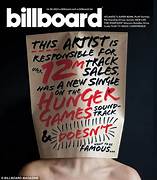
In a 2016 interview on James Corden’s Carpool Karaoke she recounted this episode in her life which began in 2010 when she attended her first 12-step meeting, and simultaneously paused her solo pursuits for three years to focus on her sobriety “And I sobered up and decided I didn’t want to be an artist anymore because I was starting to get a little bit famous and it was destabilizing in some ways. So, I thought, what doesn’t exist in pop music at the moment? And it was mystery”



